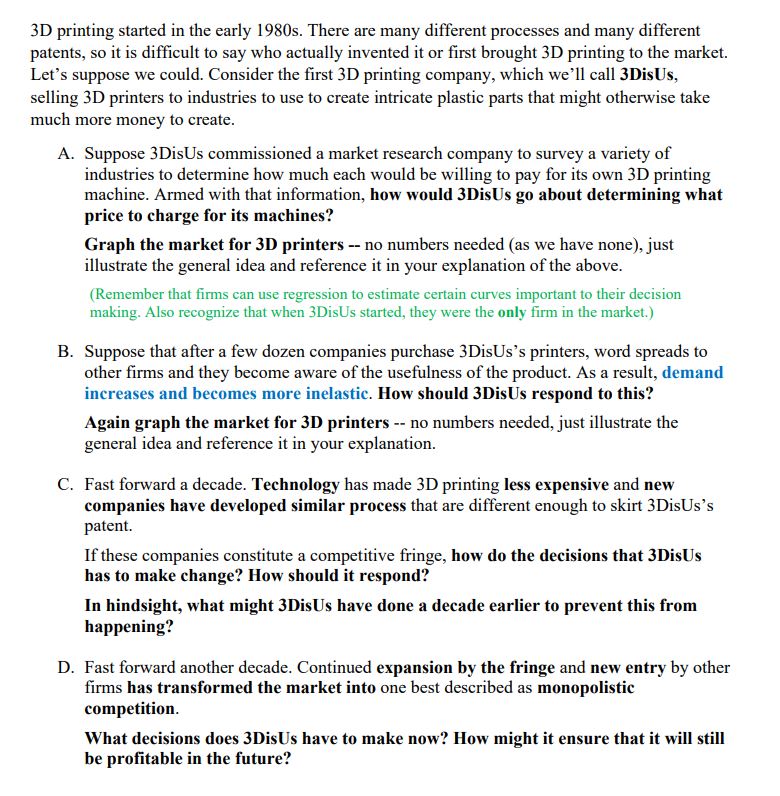Answered step by step
Verified Expert Solution
Question
1 Approved Answer
3D printing started in the early 1980s. There are many different processes and many different patents, so it is difficult to say who actually

3D printing started in the early 1980s. There are many different processes and many different patents, so it is difficult to say who actually invented it or first brought 3D printing to the market. Let's suppose we could. Consider the first 3D printing company, which we'll call 3DisUs, selling 3D printers to industries to use to create intricate plastic parts that might otherwise take much more money to create. A. Suppose 3DisUs commissioned a market research company to survey a variety of industries to determine how much each would be willing to pay for its own 3D printing machine. Armed with that information, how would 3DisUs go about determining what price to charge for its machines? Graph the market for 3D printers -- no numbers needed (as we have none), just illustrate the general idea and reference it in your explanation of the above. (Remember that firms can use regression to estimate certain curves important to their decision making. Also recognize that when 3DisUs started, they were the only firm in the market.) B. Suppose that after a few dozen companies purchase 3DisUs's printers, word spreads to other firms and they become aware of the usefulness of the product. As a result, demand increases and becomes more inelastic. How should 3DisUs respond to this? Again graph the market for 3D printers -- no numbers needed, just illustrate the general idea and reference it in your explanation. C. Fast forward a decade. Technology has made 3D printing less expensive and new companies have developed similar process that are different enough to skirt 3DisUs's patent. If these companies constitute a competitive fringe, how do the decisions that 3DisUs has to make change? How should it respond? In hindsight, what might 3DisUs have done a decade earlier to prevent this from happening? D. Fast forward another decade. Continued expansion by the fringe and new entry by other firms has transformed the market into one best described as monopolistic competition. What decisions does 3DisUs have to make now? How might it ensure that it will still be profitable in the future?
Step by Step Solution
There are 3 Steps involved in it
Step: 1

Get Instant Access to Expert-Tailored Solutions
See step-by-step solutions with expert insights and AI powered tools for academic success
Step: 2

Step: 3

Ace Your Homework with AI
Get the answers you need in no time with our AI-driven, step-by-step assistance
Get Started


